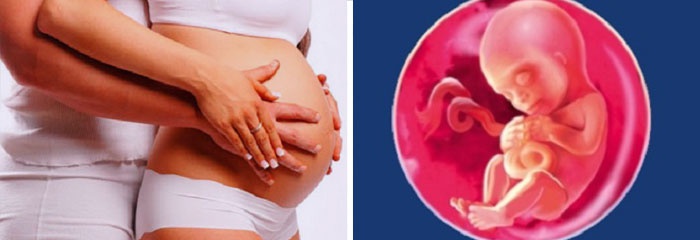Vitamins and trace elements are an integral part of the functioning of a healthy body. Improper nutrition, crazy rhythm of life, environmental degradation contribute to the reduction of stocks essential substances in a person. A natural antioxidant, an effective radioprotector, vitamin E (tocopherol) is a tocol derivative. The benefits of vitamin E for the body are enormous, because the stimulation of reproduction processes, along with folic acid, its most important purpose.
What are the benefits of taking vitamin E capsules
Tocopherol is an active derivative of tocol, which has the ability to bind with other vitamins, enhancing immunostimulating, radioprotective functions. The daily dosage of this trace element for children is 0.5 mg / kg of weight, for adults - 0.3 mg / kg. The constant replenishment of stocks important vitamin due to the daily loss by the body of up to 70% of the substance received with food or in the form of capsules.
To ensure the health benefits of vitamin E, include foods high in tocopherol in your diet:
- nuts;
- sunflower seeds, sesame seeds;
- vegetable oils;
- green vegetables;
- milk and eggs;
- beef liver.

Dial the required number of IU - international units - based on proper nutrition very difficult. Therefore, daily intake of tocopherol capsules will fill the need and protect the immune system. Benefits of vitamin E capsules:
- Stimulates the body's defenses.
- In combination with ascorbic acid, it is a protector against cancer cells.
- Suspends the biological processes of aging.
- Increases tissue oxygen consumption.
- Necessary for skeletal muscle tone.
- Increases the ability of tissue regeneration.
- Gives strength, cheerfulness for the whole day.
- Reduces spasms of blood vessels, muscles.
- Age-related diseases - cataracts, the appearance of age spots- recede in people with a sufficient supply of vitamin E.
- Necessary as a means of prevention high blood pressure and ischemia.
- for conception and gestation for future mothers and babies.
Vitamin benefits for women

The origin of the name tocopherol is due to the Greek phrase “brings the fourth offspring”, so its importance is enormous for the effective functioning of the female reproductive system. Positive impact on normalization metabolic processes, regulation hormonal background, produces vitamin E in PMS. Reception throughout critical days» An additional 500 - 600 IU of tocopherol relieves symptoms:
- irritability;
- increased sensitivity of the chest;
- puffiness;
- lethargy and apathy;
- increased appetite.
Vitamin E is useful for maintaining the beauty of the skin and hair. Research scientists have shown that this microelement maintains the integrity of cells and tissues, preventing the oxidation of the cell membrane. The result is the tone of the subcutaneous muscles and the absence of wrinkles. Taking 400 IU will replenish stocks vital energy will negate the feeling of apathy and weakness.
Vitamin E helps a woman's body reduce the risk of developing heart disease. Normalizing blood clotting, stopping the development of atherosclerosis, prevents the formation of cholesterol plaques. antioxidant properties of tocopherol do not allow toxins to damage healthy cells of the body, prevent the occurrence of cancer.
Effectively protects the skin from negative impact UV radiation, being the main component of sunscreen creams. Vitamin E normalizes the ratio of retinol in the body, maintaining the balance of this trace element. combination, for example fish oil with vitamin E, protects female body from the development of cataracts, improves vision, gives the skin healthy color.
Useful properties for men

Vitamin E is essential for the human body. Convulsions and dystrophy of muscle mass, decreased potency and cardiovascular diseases are an incomplete list of reasons to take tocopherol. Being the "engine" of sexual function, it ensures the production of active spermatozoa, without which the chances of women getting pregnant are reduced several times.
daily requirement the male body balanced diet– 10 mg/kg of body weight. Being at risk from 35 to 60 years for coronary disease, vitamin E helps men dissolve blood clots and blood clots, improves oxygen delivery to the walls of arteries. Improving blood circulation is also useful for the pelvic organs, increasing potency and prolonging man's health.
Vitamin E during pregnancy

The most important function of the action of vitamin E on the body is the reproductive orientation. When planning a pregnancy, multivitamin complexes in which this microelement is present become mandatory for taking the drug. Pregnant women need to replenish vitamin E daily, because more than 35% of the received norm “leaves” for the formation and development of the body of the unborn baby.
Tocopherol performs the following "tasks" in the body of a pregnant woman:
- Improves blood supply to the pelvic organs.
- Corrects hormonal changes, normalizing the latter.
- Reduces the likelihood of exfoliation of the placenta, contributing to its maturation and functioning.
- Relieves spasms and cramps.
- Increases tone.
Getting vitamin E from future mother, the baby accumulates reserves in the liver, adrenal glands, muscles and heart. Beneficial features tocopherol will not allow intrauterine pathologies to develop: hemorrhage, changes nervous system. Deficiency in the body of a pregnant woman threatens the development of hemolytic jaundice in newborns, problems with the circulatory system.
For hair and facial skin

Vitamin E is an indispensable component of most anti-aging creams, serums, lotions. property maintain water balance, protecting skin cells from exposure to toxins, prevents the formation of wrinkles, smoothes skin. Taking capsules inside stimulates the membrane-protective effect of cells, keeping the subcutaneous integument in good shape, prolonging youth.
Antioxidant properties of vitamin E for scalp and hair health. Most modern facilities cosmetology is not able to restore the radiant shine, strength hairline in its absence. The human body does not produce the latter, getting the required amount with food, supplementing the need by taking capsules or tablets.
Increased blood circulation of the scalp as a result of taking tocopherol relieves dandruff, stimulates hair growth, and protects against hair loss. The application of hair masks, in which this trace element is present, gives wavy, curly hair elasticity, resilience, eliminates cuts, brittleness. As a UV protector, vitamin E for hair protects your curls from fading.
Possible harm from vitamin abuse
The benefits and harms of vitamin E are inextricably linked. Exceeding daily allowance consumption, you create an excess of trace elements in the body, which accumulates in the liver, kidneys, and cardiovascular system. An imbalance of tocopherol can cause:
- diarrhea
- worsening general condition;
- in men - a slight violation of coordination of movement, a split in the eyes;
- nausea and headaches.
Latest Research Japanese doctors confirmed that hypervitaminosis (with a daily intake of more than 800 - 1200 IU) of tocopherol is not useful, but dangerous for bones. Excess reduces bone mass, causing osteoporosis, which is dangerous for people over 50 years of age. Tocopherol is incompatible with Fe preparations: the interval between taking these trace elements should be at least 8-9 hours. Compliance with the recommended doses, mandatory consultation with a doctor - the necessary conditions beneficial effects of tocopherol.
Vitamin A+E(Vitamin a+e)
Basic physical and chemical characteristics: oval soft, gelatin-coated light yellow or light brown capsules with a seam, filled oil solution;
Compound. 1 capsule includes vitamin E (tocopherol acetate) 150 mg and vitamin A (retinol acetate) 2,500 IU;
other ingredients: octyl gallate, peanut butter, gelatin, glycerin, ethyl hydroxybenzoate, water.
Release form of the medicinal product. The capsules are soft.
Pharmacotherapeutic group. Vitamins. Combined vitamin preparations. ATC code A11JA.
The action of the drug.
Pharmacodynamics. In humans, vitamin A is essential for the reproduction, growth, regeneration and differentiation of the epithelium, for the growth and formation of bones, for the normal functioning of the organ of vision and for maintaining the integrity of the mucous membrane. In the retina, retinol is amenable to transformation to cis-retinal aldehyde, which then forms, in reaction with opsin, a photopigment (rhodopsin) - a vital compound for adapting the eye to low-light conditions. Vitamin A is assumed to act as a co-factor in numerous biochemical reactions such as mucopolysaccharide synthesis, cholesterol synthesis, and hydroxysteroid metabolism.
The exact biological mechanism of action of vitamin E in humans is unknown, although it is assumed that it acts as an antioxidant. Vitamin E and selenium protect semisaturated free acids, cell membrane phospholipids, and other oxygen-sensitive compounds (such as vitamin A and ascorbic acid) from oxidation. Vitamin E also takes part in stimulating the metabolic processes of steroids and affects the synthesis of porphyrins.
Low concentrations of tocopherol inhibit oxidant-induced hemolysis of erythrocytes in vitro.
Numerous studies indicate that vitamin E reduces platelet aggregation
Vitamin E inhibits the synthesis of prostaglandin E 2 and enhances immune responses. The use of vitamin E improves immunity in healthy older people. Long-term use of vitamin E (for 235 days) at a dose of 200 mg in healthy volunteers over 65 years of age enhances the function of T-lymphocytes.
The exact mechanism of action of vitamin E in patients with Alzheimer's disease is unknown. Vitamin E slows down degenerative changes in the cells of the hippocampus and accelerates the resumption of motor functions after spinal injury. As is known, vitamin E inhibits lipid peroxidation and reduces the death rate of b-amyloid cells.
To the beneficial effect of vitamin E in cardiovascular diseases belongs to its binding to low density lipoproteins (LDL), which increases the resistance of the latter to oxidation. Another mechanism is also possible.
Vitamin E reduces the cytotoxicity of oxidized low-density lipoprotein LDL (oxy-LDL) relative to endothelial cells, and therefore can increase endothelial stability, thereby reducing atherosclerotic plaque formation and thrombus formation. Vitamin E also inhibits monocyte adhesion and platelet aggregation. At healthy people who receive vitamin E in daily doses of 400-1 200 mg, a decrease in protein kinase was noted C-in dependencies platelet aggregation.
Vitamin E has a beneficial effect on vascular function by preventing oxy-LDL inhibition of nitrous oxide release from endothelial cells. Angiographic studies with coronary artery bypass surgery have shown that vitamin E slows down the development of coronary disease in patients with coronary bypass grafts. But, according to the studies of some authors, vitamin E at a dose of 700 mg / day and other antioxidants (b-carotene at a daily dose of 30,000 IU and ascorbic acid at a daily dose of 500 mg) do not prevent recurrence of coronary reocclusion in patients who have responded to angioplasty.
Pharmacokinetics.
The pharmacokinetics of the drug consists of the pharmacokinetics of the active ingredients of the drug - vitamin A and vitamin E.
Absorption: when taken orally in doses that do not significantly exceed the physiological need for vitamin A, it is rapidly and completely absorbed in the upper gastrointestinal tract - mainly in the duodenum. Mandatory for the absorption of vitamin A is the presence of unsaturated fats and proteins.
Only 20-60% of the vitamin E obtained from food is absorbed in the body. The absorption of vitamin E from the gastrointestinal tract depends on the presence of fats, bile and the normal functioning of the pancreas, since it is assumed that cholesterol esters are decomposed by pancreatic enzymes before absorption. As the dose increases, the amount of vitamin E that is absorbed decreases.
Distribution: approximately 90% vitamin A, retinol palmitate and a small amount of retinal is deposited in the liver. A small amount of retinol palmitate is also deposited in the kidneys, muscles, adrenal glands and intravascular lipids.
Vitamin E is distributed in all tissues and is slowly deposited in muscles, liver and adipose tissue. Vitamin E is also deposited in the eyeball - mainly in the cornea, vitreous body and retina, reaching high concentrations in the latter.
Elimination: Retinol binds to glucuronic acid: β-glucuronate is amenable to hepatic circulation and oxidation to retinal and retinoic acids. Retinoic acid is decarboxylated and binds to glucuronic acid to be excreted in the bile and faeces. The biological half-life of retinol is very long and is measured from several weeks to several months.
Retinoic, retinol and other water-soluble metabolites are also excreted in urine and faeces. In healthy people, retinol is not excreted in the urine, although such elimination exists in patients with pneumonia or chronic nephritis.
Most of vitamin E is slowly excreted in the bile, although some of it is biotransformed in the liver to tocopheronic acid glucuronates and g-lactones, which are then excreted from the body in the urine. Quinone metabolites can also be formed. The biological half-life of vitamin E is approximately 2 weeks.
Indications for use. Treatment of vitamin A and E deficiency, which can lead to xerophthalmia, keratomalacia, night blindness, diseases of the epithelium and mucous membranes, growth retardation, reduced immunity to infections.
The use of vitamins A and E is favorable for the prevention of the formation of free radicals and supraoxides, for the prevention and treatment of cardiovascular diseases (coronary disease), intermittent claudication, thrombophlebitis, palliative treatment, Huntington's chorea, neuralgia, neuromuscular diseases, postmenopausal syndrome, severe burns, for the prevention of impotence, the threat of miscarriage and infertility.
At heightened need in vitamins, such as heightened influence stressful situations and inadequate diet.
Method of use and dosage.
More often side effect occurs with accidental intake of large doses of vitamin A or with long-term intake of it in large doses.
Vitamin E is non-toxic, although large doses of vitamin E (more than 300 mg) may cause nausea, diarrhea, intestinal cramps, fatigue, weakness, headache, blurred vision and skin rash. When using large doses, there may be an increase in serum concentrations of creatinine kinase, cholesterol, triglycerides, estrogens and androgens, as well as a decrease in the concentration of thyroxine and triiodothyronine.
Contraindications.
Hypersensitivity to vitamins A and E or to any components of the drug. Hypervitaminosis A and/or hypervitaminosis E.
Overdose.
An overdose of the drug can lead to symptoms of acute and chronic toxicity. Symptoms of an overdose of vitamin A.
Symptoms of acute toxicity are observed 6 hours after ingestion of 75,000 to 150,000 IU in children and 1,000,000 to 1,500,000 IU in adults. Possible strong sedative effect, drowsiness, irritability, coma, nausea, vomiting and diarrhea, increased intracranial pressure, headache, exophthalmos, blurred vision. For a few days, therefore, erythema, itching and peeling of the skin may occur, which persist for several weeks. Most symptoms improve within a few days of stopping vitamin A.
With long-term use of large doses of vitamin A, chronic toxicity is observed. Early symptoms include fatigue, malaise, lethargy, irritability, depression or schizophrenia-like symptoms, anorexia, abdominal pain, vomiting and nausea, mild fever, excessive sweating, hepatosplenomegaly, skin lesions, joint and bone pain. Dry hair, chapped lips, bleeding, hair loss, erythema, hyperpigmentation, and scaling of the skin may also be observed.
Central nervous system symptoms include increased intracranial pressure with edema optic nerve, headache, protruding crown in newborns, visual impairment, hearing paresthesia, dizziness and painful swelling of long bones (mainly leg bones).
Treatment of hypervitaminosis A involves the abolition of vitamin A intake and the appointment of symptomatic therapy. Symptoms may disappear within a few days, although complete remission may take several days or several months. Subjective and objective symptoms usually disappear within 1-4 weeks after vitamin A is discontinued.
Vitamin E enhances the absorption, utilization and distribution of vitamin A, and also protects against hypervitaminosis A, although the latter claims are more accurate.
Features of use.
Given the risk of hypervitaminosis, the drug should not be administered with other drugs that contain vitamin A.
The drug should be used with caution in patients with hepatic and renal insufficiency or in patients who receive concomitant anticoagulants of the coumarin / indanedion derivatives group due to the risk of hypoprothrombinemia.
Pregnancy and lactation.
The use of the drug during pregnancy and breastfeeding carried out on the recommendation and under the supervision of a physician.
Vitamin A belongs to category A drugs, so it can be consumed during pregnancy. However, at doses that exceed the recommended daily intake (RDA), it belongs to category C, which means that the recommended doses cannot be exceeded during pregnancy.
Women of reproductive age should also not take excessive doses of vitamin A; instead, b-carotene, a precursor to vitamin A, is recommended because it is not teratogenic.
Retinol penetrates into breast milk, but in low concentrations, and therefore, lactating women need additional doses of vitamin A. The recommended dose of vitamin A for women who are breastfeeding is 4,250 IU/day during the first six months of lactation and 4,000 IU/day next six months of lactation.
Vitamin E deficiency is estimated to occur in approximately 10% of pregnant women. Currently, no data have been received about the complications that arise due to an increase or decrease in the level of vitamin E in pregnant women. For safety during pregnancy, vitamin E is classified as Category A, however, at doses that exceed the recommended allowance for intake (RDA), vitamin E belongs to Category C. The recommended daily dose of vitamin E during pregnancy is 15 mg, although in pregnant women who receive daily doses of vitamin E 15-30 mg, its concentration in maternal and fetal blood does not change.
Influence on the ability to drive a car and other mechanisms.
The drug does not have an undesirable effect on the mental and motor function of a person, it can be taken by people who drive a car and other mechanisms.
Interaction with others medicines . When administered orally, cholesterol, cholestipol, mineral oils and neomycin can reduce the absorption of vitamins A and E.
Large doses of vitamin A may increase the anticoagulant effect of warfarin.
Use with retinoids (eg, etretinate, isotretinol) may potentiate the side effects of vitamin A.
At doses higher than 10 mg/kg, vitamin E reduces the response to iron therapy in children with iron deficiency anemia.
A number of studies have found that vitamin A can change the results of serum cholesterol concentration and show inaccurate results in the Zlatkin-Zak tests, as well as in tests with elucidating the concentration of bilirubin using Ehrlich.
Vitamin E and its metabolites can antagonize vitamin K. Therefore, patients who receive oral anticoagulants or estrogens after taking large doses of vitamin E may experience bleeding. In healthy people, vitamin E has no effect on blood clotting.
Vitamin E can enhance the absorption and distribution of vitamin A in the body and protect against hypervitaminosis A; however, this pharmaceutical action of vitamin E has not been proven.
Terms and conditions of storage.
The drug should be stored below 25°C in a dry, dark place. Do not freeze. Keep out of the reach of children.
Shelf life - 2 years.
We are all used to the fact that vitamins, regardless of their type and form of release, are good for our health. That's why, can taking these vitamins harm us? You will be surprised, but there are cases when this can happen. About, when useful our publication...
The benefits and harms of vitamins
Since the 90s in America, and not only there, there has been a widespread vitamin boom. Many people drink handfuls of vitamins, trying to original way solve their health problems. It is noteworthy that only a few of them consult with their doctor beforehand. Most of the "consumers" of such vitamins are engaged in self-prescription and self-treatment. It would seem, well, what could be wrong with all this? It turns out that the harm may not be mythical at all. So,
an overdose of trace elements and vitamins can even be dangerous for you and me.
Don't believe? Then what do you say to the following arguments.
Harm from an overdose of vitamins
Beneficial Vitamin A, which was discovered by scientists in 1923, and which takes an active part in the functioning of our body, nourishes skin cells, preserves our youth and beauty, is an indispensable component for good performance vision, improves metabolic processes and strengthens our immunity, normalizes the functioning of the reproductive system, it turns out that with excessive enthusiasm in the form of taking vitamins or, it can cause cardiovascular diseases and become a catalyst for the development of cancerous tumors.
In addition, this vitamin tends to accumulate in our body and, unfortunately, no one can say when its reserves exceed the critically permissible norms. And now imagine a situation when you actively use vitamin A in order to make up for, in your opinion, its deficiency (you came to this conclusion on your own and relied only on your own feelings - you started having vision problems, your skin became dry and you feel the effect of tightness). One fine day, you just notice that your problems have not gone anywhere - vision, skin condition, but other diseases and disorders have been added to them.
Vitamin E – in case of its “overdose”, internal bleeding may open and if you overdo it with vitamin B6 – irreversible processes of disruption of the nervous system are provided to you. The same applies to the well-known vitamin C, which is also called a powerful natural antioxidant. Instead of saving the cells of your body from damage, in case of an overabundance, it turns into an oxidant that destroys our body from the inside.
The same applies to the alleged effect of longevity, which you can achieve as a result of the regular use of vitamins A, E. Recent studies in this area indicate the opposite.
People who regularly took these vitamins actually had 4% shorter life expectancy (vitamin E) and 16% shorter life expectancy (vitamin A) than those people who had not even heard of the need to consume for health vitamins in tablets or liquid form release.
In addition, according to cardiologists, vitamin E does not reduce the risk of atherosclerosis, heart attack and does not increase life expectancy. Whereas, vitamin A, and beta-carotene derived from it, on the contrary, increases the number of deaths. If we consider this issue from the standpoint of oncology, then here the results are even worse. Instead of, as previously thought, vitamins A, E, C protect our digestive organs from possible development oncological tumors, a combination of beta-carotene and vitamin A, on the contrary, increases the risk of bowel cancer by 30%.
According to independent studies, out of a million people who consume various vitamin supplements, every year 9 thousand people die from cancer of the digestive tract!
But, and that's not all ... In 2004, data were published according to which, additional intake of vitamin C in people suffering from diabetes contributes to the development of heart disease. It was after this publication that the German Heart Foundation issued a special warning stating that
before you start taking vitamins in addition to your diet, you need to think carefully and be sure to consult a doctor!
And, according to the chairman of this foundation, Professor Burke -
vitamins have never in their history prevented cancer, heart attack, let alone cured any other disease...
In parallel with these studies, others were conducted - for example, people who sought to enrich their diet with fruits and vegetables, which contained all these vitamins in a natural form, had fewer cases of cancer and cardiovascular disease. What is the secret? According to all the same scientists, the whole solution lies in the fact that In addition to these essential vitamins, plant foods contain thousands of other beneficial substances that contribute to the balanced absorption of vitamins by our body. Whereas, vitamins in syrups and tablets are an artificial product.
For centuries, people have been getting the vitamins they need from their daily diet. So, deficiency of vitamin A in the body was replenished by the use of fermented milk products, inclusion in the diet butter, egg yolk, liver of fish and animals, carrots, apricots, green vegetables and plants, potatoes, yellow fruits and vegetables, seeds.
It was enough to eat only 100 grams of carrots per day - as your daily "limit" of vitamin A was replenished.
